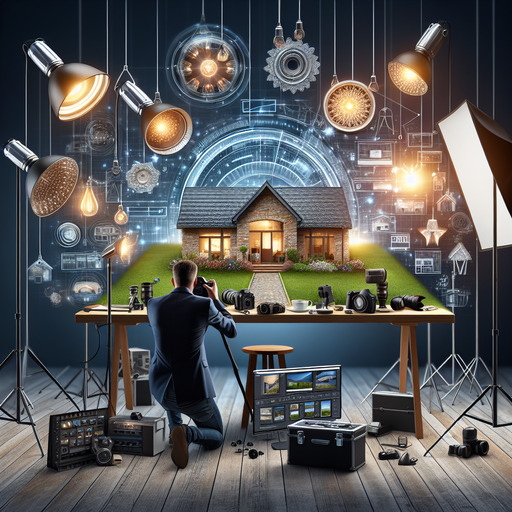
-
Table of Contents
- Mastering Real Estate Photography: Tips, Techniques, and Tools
- Understanding the Importance of Real Estate Photography
- Essential Real Estate Photography Tips
- 1. Mastering the Art of Lighting
- 2. Choosing the Right Equipment
- 3. Perfecting Composition
- Enhancing Photos with Real Estate Photography Editing
- Real Estate Photography Pricing: What to Consider
- Conclusion
- Questions and Answers
Mastering Real Estate Photography: Tips, Techniques, and Tools
In the competitive world of real estate, first impressions are everything. High-quality real estate photography can make or break a property listing, influencing potential buyers’ decisions before they even step foot inside. Whether you’re a seasoned photographer or a real estate agent looking to enhance your listings, understanding the nuances of real estate photography is crucial. This guide will walk you through essential tips, techniques, and tools to elevate your property photography game.
Understanding the Importance of Real Estate Photography
Real estate photography is more than just snapping pictures of a property. It’s about capturing the essence and potential of a space, enticing buyers to envision themselves living there. According to the National Association of Realtors, 87% of home buyers found photos to be the most useful feature of online listings. This statistic underscores the importance of investing in quality photography to make your listings stand out.
Essential Real Estate Photography Tips
1. Mastering the Art of Lighting
Lighting is the cornerstone of great photography. In real estate, it can highlight the best features of a property or, if done poorly, obscure them. Here are some tips to get it right:
- Utilize natural light: Shoot during the day when natural light is abundant. Open curtains and blinds to let in as much light as possible.
- Use additional lighting: In darker areas, use soft, diffused lighting to avoid harsh shadows.
- Consider golden hour: The hour after sunrise and before sunset offers soft, warm lighting that can enhance exterior shots.
2. Choosing the Right Equipment
Having the right equipment can significantly impact the quality of your photos. Here’s what you need:
- Camera: A DSLR or mirrorless camera with a wide-angle lens is ideal for capturing spacious interiors.
- Tripod: Essential for stability, especially in low-light conditions.
- Drone: For aerial shots that provide a unique perspective of the property and its surroundings.
3. Perfecting Composition
Composition is key to creating visually appealing images. Consider these techniques:
- Rule of thirds: Divide your frame into thirds, both horizontally and vertically, and place key elements along these lines.
- Leading lines: Use architectural lines to guide the viewer’s eye through the image.
- Declutter: Ensure spaces are tidy and free of personal items to create a neutral canvas for potential buyers.
Enhancing Photos with Real Estate Photography Editing
Post-processing is an essential step in real estate photography. Editing can correct lighting issues, enhance colors, and remove unwanted elements. Popular software like Adobe Lightroom and Photoshop offer powerful tools to refine your images. Remember, the goal is to enhance, not mislead, so keep edits realistic.
Real Estate Photography Pricing: What to Consider
Pricing your real estate photography services can be challenging. Consider factors such as the size of the property, the number of photos required, and any additional services like drone photography or virtual tours. Research competitors in your area to ensure your pricing is competitive yet reflective of your skills and experience.
Conclusion
Real estate photography is a powerful tool in the property market. By mastering lighting, composition, and editing, and using the right equipment, you can create stunning images that captivate potential buyers. Remember, the goal is to showcase the property in its best light, making it irresistible to prospective buyers.
For more insights into real estate photography, check out this comprehensive guide on Wikipedia.
Questions and Answers
Q1: What is the best time of day for real estate photography?
A1: The best time is during the day when natural light is abundant. Shooting during the golden hour, just after sunrise or before sunset, can also provide beautiful, soft lighting for exterior shots.
Q2: How important is editing in real estate photography?
A2: Editing is crucial as it allows you to correct lighting issues, enhance colors, and remove distractions, ensuring the property looks its best without misleading potential buyers.
Q3: What should I consider when pricing my real estate photography services?
A3: Consider the property’s size, the number of photos needed, additional services like drone shots, and local market rates to ensure your pricing is competitive and fair.
If you’re interested in learning more about our real estate photography services or have any questions, please contact us. We’re here to help you showcase your properties in the best possible light.